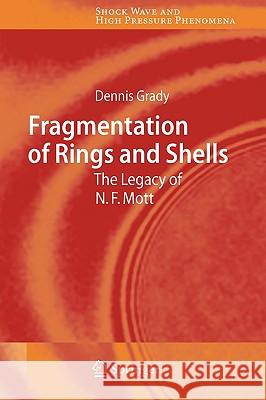Fragmentation of Rings and Shells: The Legacy of N.F. Mott » książka
Fragmentation of Rings and Shells: The Legacy of N.F. Mott
ISBN-13: 9783540271444 / Angielski / Twarda / 2006 / 376 str.
For a brief period during the latter part of World War II, N. F. Mott, then professor of physics at the University of Bristol, later knighted and a Nobel laureate, undertook the theoretical description of the statistical fragmentation of bodies subjected to intense impulsive loads. Some of his most innovative ideas on the micromechanical and molecular aspects of fracture are included in his subsequent publications. But it is Motts original publications where the seminal theoretical concepts from which numerous later modeling efforts and engineering formulae emerged. Mott's presentation is terse, leaving much for the reader to fill in, and considerable reflection, with pencil in hand, is required to begin to appreciate the richness and insight offered in these works. The present book surveys the theoretical analysis put forth by Mott with particular focus on his efforts to characterize the size and distribution of fragments resulting from a dynamic fragmentation event. It also pursues additional new theoretical analysis with the intent to delve further into the physical ideas and unfinished analysis implicit in Motts original study. This book addresses all scientists and engineers concerned with the dynamic fracture and fragmentation of solid bodies subject to intense transient loads imparted by explosive detonation and high-velocity impact, from both the historical and modern perspective.











